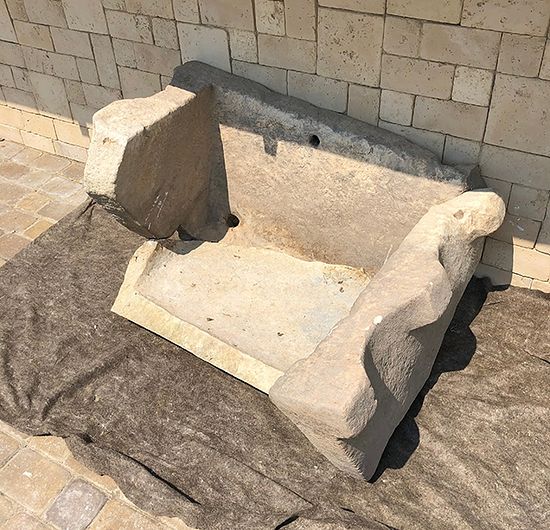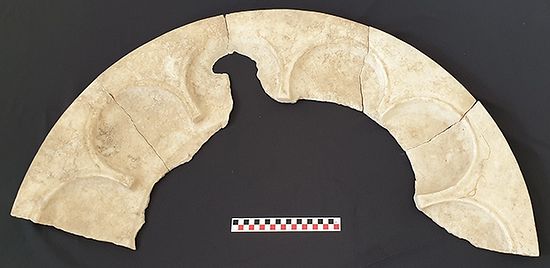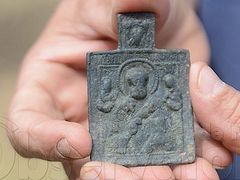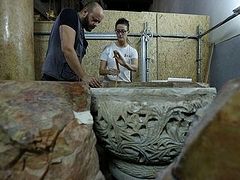Krasnodar, Russia, August 1, 2019,
 Fragment of the marble baptismal font. Photo: archaeolog.ru
Fragment of the marble baptismal font. Photo: archaeolog.ru
Russian archaeologists in the southern Russian region of Krasnodar Krai report an amazing discovery from one of the earliest Christian sites on Russian soul.
At an excavation site in Phanagoria (just across the Kerch Strait from Crimea), scientists of the Institute of Archeology of the Russian Academy of Sciences discovered the fragments of a marble altar tabletop, as well as a baptismal font, presumably from the 5-6th centuries, which experts attribute to one of the oldest Christian churches in modern Russia.
According to archaeologists, the findings confirm the existence of an early Christian church on the territory of the Cimmerian Bosporus, as Foma.ru reports, citing the Institute of Archeology of the Russian Academy of Sciences.
“These findings are very important for understanding how Christianity was formed on the territory of what is now modern Russia: It appeared in the Bosporus at least by the 4th century, as it was here that St. Andrew the First-Called preached,” said Vladimir Kuznetsov, head of the Phanagoria archaeological expedition of the Institute of Archeology.
“And it was on the territory of the Bosporus Diocese [today the Feodosia and Kerch diocese of the Ukrainian Orthodox Church—O.C.] that the ancient Orthodox Church of St. John the Baptist is located today. It’s possible that the fragments found belong to another ancient Christian church, which was once located on the Asian part of the Bosporus,”Kuznetsov added.
 Fragment of the marble tabletop. Photo: archaeolog.ru
Fragment of the marble tabletop. Photo: archaeolog.ru
According to experts, the fragment of a marble semicircular tabletop with arched cuts along the edge, and the fragment of a marble font can be considered convincing evidence that a church was built in Phanagoria, one of the first Christian communities on this territory.
Tabletops in the form of the Greek letter “sigma,” usually dated to the 5th-6th centuries, were used in churches as altars, both in the capacity of the main altar, as well as in tables used for liturgical and funeral trapezas.
The origin of most extant finds are unknown, but their concentration in the Eastern Mediterranean is noted, although, generally speaking, only small fragments of them have been found, usually devoid of any decorative elements.
“There are very few such items, and they are usually found in ruins. To this day, only three extant examples are known, two in museums, in Athens and New York, and another was sold at an auction at Sotheby's in London. Therefore, the fragment of the altar table found is an extraordinary find,” said Kuznetsov.
The second find in Phanagoria, was the fragment of a marble baptismal font. In the early Byzantine period, if there was no special baptistery, in which there was a large basin with steps, then they baptized in small fonts.
Judging by the size, the font was designed not only for infants, but also for adults. Unfortunately, only its lateral, back and bottom sides have been preserved. The appearance of the front side, on which Christian symbols and the sign of the cross were usually placed, is still unknown.
Another ancient baptismal font, found in Bethlehem, which dates to approximately the same period, was found in Bethlehem last month.
Follow us on Facebook and Twitter!
Matfey Shaheen



